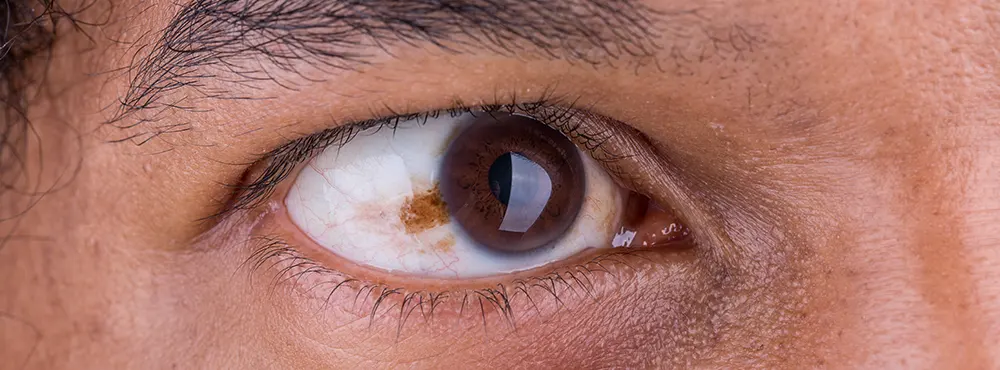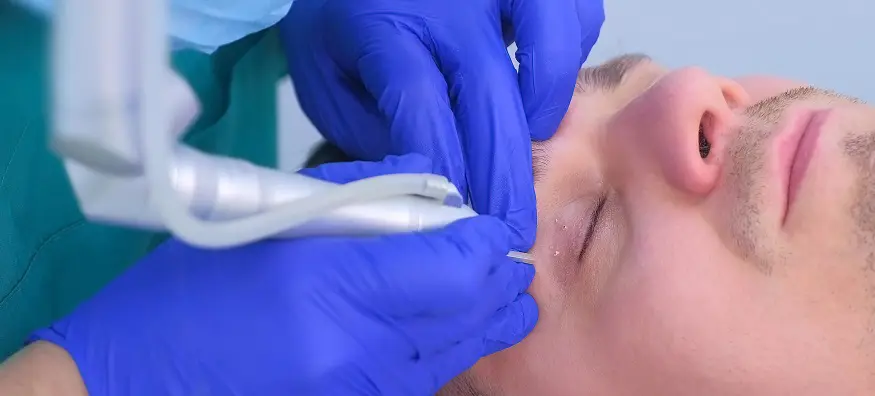
 Offers
Offers-
 Account
Account
-
0
 Favorite
Favorite
-
0
 Basket
Basket



Eye cancer doesn’t always cause obvious symptoms; it may only be discovered through a routine eye test. Melanoma symptoms include:
Eye melanoma occurs when the pigment-producing cells in the eyes divide and multiply too rapidly. This produces a lump of tissue known as a tumour.
It’s not entirely clear what causes eye melanoma; it occurs when healthy cells in the eyes start to multiply. Melanoma is usually caused by a combination of risk factors, one of the biggest being exposure to UV. The below factors can increase your risk of developing eye cancer.

Your optician/GP will refer you to an ophthalmologist; if they suspect you may have ocular melanoma, you will be referred to a specialist centre for eye cancer. Your doctor will perform an eye examination – to look at the structures of your eyes in more detail and check for abnormalities.
They may perform an ultrasound scan of your eye – a small probe placed over your closed eye uses high-frequency sound waves to create an image of the inside of your eye; this allows your doctor to find out more about the position of the tumour and its size. They may perform a biopsy - they’ll take a small tissue sample to a laboratory to test for cancerous cells. The genetic information in these cells is analysed to give an indication of the likeliness that the cancer could spread or come back.
A fluorescein angiogram is where photographs of the suspected cancer are taken using a special camera after dye has been injected into your bloodstream to highlight the tumour.
If the tumour is small and there is still some vision in the eye, surgery can be done to remove the tumour.
Radiation therapy can be used as treatment; this involves applying external radiation to the tumour to kill the cancer cells.
Brachytherapy is another form of treatment that involves inserting radioactive plates lined with radioactive material called plaques into part of the eye and leaving it there to kill the cancer cells. The material is usually left inside the eye for a week.
If the tumour is especially large or if vision loss has occurred, it might be necessary to perform eye enucleation, which is removal of the eye. This is to ensure that the tumour is removed fully. If the eye is removed, it will be replaced with an artificial eye which will match the colour of the other eye.
If the tumour has spread to other parts of the body (metastasised) the life expectancy used to be short. Now with immunotherapy there is significant promise, with tumours showing regression in many cases.
The best way you can prevent developing eye cancer is to always wear sunglasses with UV protection. All of the sunglasses sold at Feel Good Contacts protect against 100% of UVA and UVB rays, so you can enjoy the sun safe in the knowledge that you are protected. Wrap-around frames and oversized styles are some of the best sunglasses for protection because their larger surface area gives extra coverage around the eyes. We advise not to buy cheap sunglasses in the market or fake copies of branded sunglasses, as these often don’t provide full protection.
You can also wear wide brim hats when outside. Having regular eye tests is also an important part of keeping your eyes healthy. Your optician can spot any issues with your eyes during a routine eye test before they can develop into anything more severe. You should visit your optician at least every 2 years and sooner if recommended.
Disclaimer: The advice in this article is for informational purposes only and does not replace medical care or an in-person check-up. Please check with an eyecare professional before purchasing any products or remedies. For information on our article review process, please refer to our Editorial Policy.